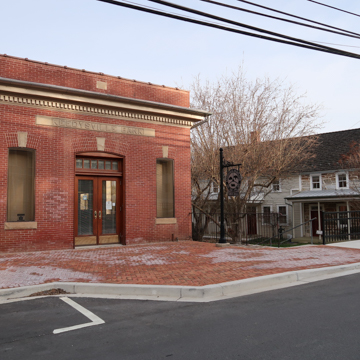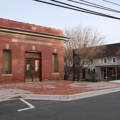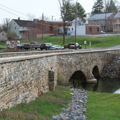Keedysville was established by German immigrants as a market town for the local milling industry, situated at the intersection of the Sharpsburg to Boonsboro Turnpike (MD 34) and the Frederick to Williamsport (Keedysville) Road. A section of old Keedysville Road remains intact, as do the connecting, c. 1830 stone arch bridges over Little Antietam Creek. The town began with Jacob Hess’s house and mill in 1768, soon followed by nearby Hitt (Pry), Nichodemus, Eakles, and Orndorff mills. Early buildings are of indigenous log and stone construction, reflecting the Germanic traditions of its settlers, including the brick, dual-entrance, gable-and-hip roofed Eversole House (c. 1850; 3 S. Main); the Hess House (c. 1768; 17 S. Main), with its typical three-room plan and a c. 1810 addition; furniture-maker William Carr’s asymmetrical stone house (c. 1854; 38 S. Main); and butcher George Snively’s stone house (c. 1845; 50 S. Main), with dual entrances into the guest parlor and family kitchen.
The town was renamed for the Keedy family when incorporated in 1873, with the arrival of the Washington County Branch of the Baltimore and Ohio Railroad. The Wyand House Hotel (c. 1874; 2 N. Main St.) was then erected on the town square to accommodate travelers. Picturesque late-nineteenth-century dwellings reflect the town’s heyday, exhibiting features particular to Keedysville, such as steeply pitched central gables with jig-sawn trim and facades with a bay window to one side only, as at the Hoffman House (c. 1880; 56 S. Main). Many combine a house and business, such as the J. Thomas house and store (c. 1870; 39 S. Main), and the Wyand house and store (1862; 5 N. Main) that occupies the square’s northwest corner.


















